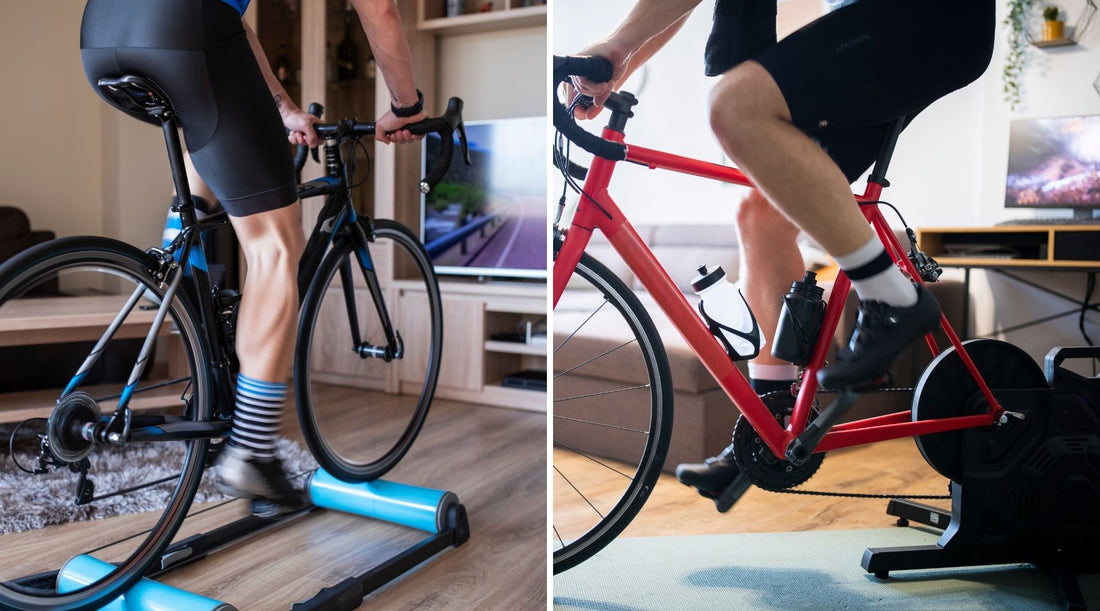In the realm of indoor cycling, the eternal debate between bike trainers and rollers continues to captivate cycling enthusiasts. Making the right choice between these two devices can significantly impact your training experience. In this comprehensive guide, we delve into the nuances, benefits, and drawbacks of bike trainers and rollers, aiming to equip you with the knowledge needed to make an informed decision.
Understanding Bike Trainers
Definition and Types
Bike trainers are stationary devices designed to simulate outdoor cycling conditions. They come in various types, including fluid, magnetic, and direct-drive trainers. Each type offers distinct features, affecting the overall cycling experience.
Advantages of Bike Trainers
- Realistic Resistance: Fluid and magnetic trainers replicate outdoor resistance, providing a lifelike cycling feel.
- Structured Workouts: Many trainers offer programmable workouts, enabling cyclists to follow a structured training regimen.
Drawbacks of Bike Trainers
- Limited Skill Enhancement: Bike trainers may lack the lateral movement found in outdoor cycling, limiting skill development.
- Noise Levels: Some trainers generate noise, potentially disrupting your training environment.
Unmasking Bike Rollers Trainers
Definition and Types
Rollers consist of three cylindrical drums that support the bike. Cyclists balance on these drums, simulating a more natural riding experience. The types of rollers include traditional, hybrid, and smart rollers.
Advantages of Rollers
- Improved Balance and Technique: Riding on rollers enhances balance and refines cycling technique.
- Engaging Experience: The need for balance keeps riders engaged, making workouts mentally stimulating.
Drawbacks of Rollers
- Steep Learning Curve: Riding on rollers requires practice, and beginners may find it challenging to maintain balance initially.
- Limited Resistance Options: Compared to bike trainers, rollers may offer limited resistance adjustments.
Choosing the Right Fit for You
Now that we've dissected the characteristics of bike trainers and rollers, the ultimate question arises: Which is the right fit for you? Consider the following factors:
- Training Goals: Define your specific training objectives, whether it's simulating outdoor rides or honing balance and technique.
- Skill Level: Beginners might lean towards bike trainers for stability, while seasoned cyclists could opt for rollers for a more challenging workout.
- Space and Noise Constraints: Assess your available space and tolerance for noise, as some trainers may be bulkier and louder than rollers.
Frequently Asked Questions
1. What is the main difference between bike trainers and rollers?
The primary distinction lies in their design and functionality. Bike trainers are stationary devices that simulate outdoor cycling conditions, offering realistic resistance. On the other hand, rollers consist of three cylindrical drums that support the bike, requiring cyclists to balance and simulate a more natural riding experience.
2. How do I choose between a bike trainer and rollers based on my skill level?
For beginners or those seeking stability, bike trainers are often the preferred choice. They provide a stationary platform, allowing cyclists to focus on pedaling without the added challenge of balance. More experienced cyclists who aim to improve balance and technique might opt for rollers, despite the initial learning curve.
3. Why is heart rate monitoring crucial during indoor cycling sessions?
Monitoring your heart rate during indoor cycling sessions is essential for optimizing your workout. It allows you to gauge the intensity of your exercise, ensuring you stay within your target heart rate zone for effective cardiovascular training. Consider integrating a heart rate monitor compatible with your cycling device for a comprehensive and data-driven workout experience.
4. Can I use my outdoor bike with both trainers and rollers?
Yes, both bike trainers and rollers are compatible with most outdoor bikes. However, it's advisable to check compatibility and consider additional accessories, such as quick-release skewers or trainer tires, to ensure a secure fit and prevent unnecessary wear on your outdoor bike.
5. Are there any specific maintenance requirements for bike trainers and rollers?
Regular maintenance is essential for both bike trainers and rollers to ensure optimal performance and longevity. Clean the rollers or trainer wheel, inspect the resistance mechanism, and lubricate moving parts as recommended by the manufacturer. Following a routine maintenance schedule will keep your equipment in top condition and enhance your overall cycling experience.
Conclusion
In conclusion, the choice between bike trainers and rollers boils down to personal preferences, fitness goals, and skill levels. Both devices offer unique advantages, and understanding these nuances empowers you to make a well-informed decision. Whether you lean towards the realism of bike trainers or the balance-enhancing aspect of rollers, your indoor cycling journey is about to reach new heights. Happy pedaling!

